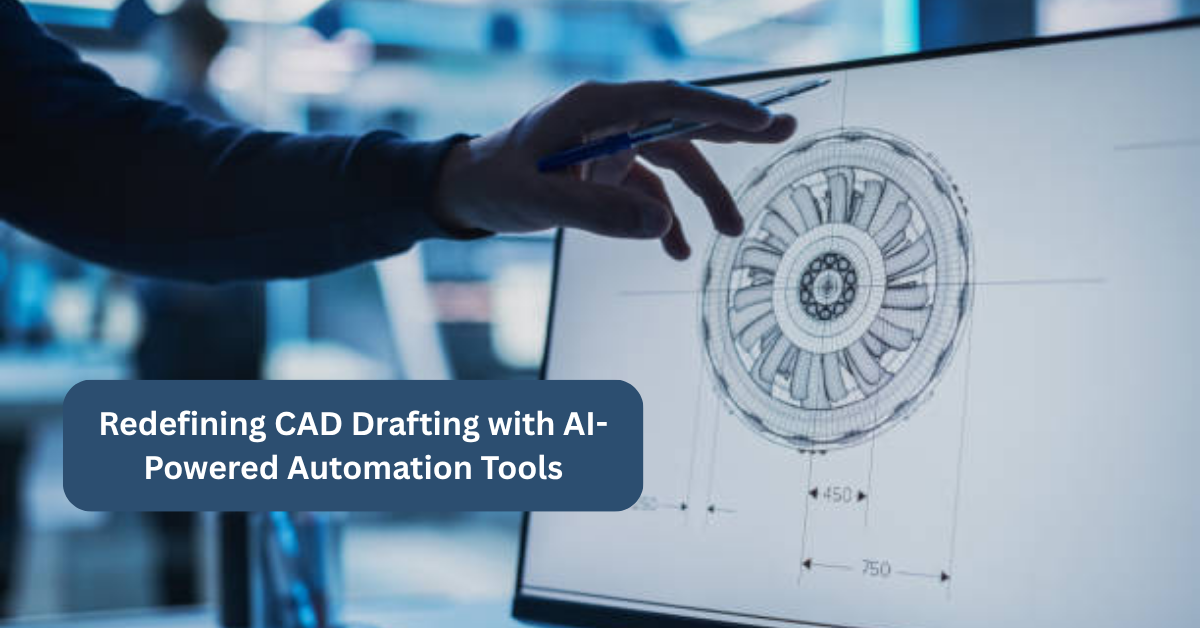Redefining CAD Drafting with AI-Powered Automation Tools

As technology advances, CAD Drafting Services are undergoing a significant transformation. Automation and AI tools are now enhancing precision, efficiency, and design capabilities across engineering, architecture, and manufacturing sectors. These cutting-edge innovations are not just improving workflows, they’re completely redefining the drafting landscape. In 2025, this shift is more evident than ever, as organizations move toward smarter, more adaptive design environments. This explores how AI-powered automation tools are reshaping CAD drafting, the current trends influencing these changes, and what professionals can expect in the near future.
The Evolution of CAD Drafting Services
Traditionally, CAD Drafting Services were time-intensive, requiring manual input, complex revisions, and repetitive tasks. Designers spent hours adjusting lines, calculating tolerances, and ensuring accuracy. With the integration of computer-aided design in the late 20th century, the drafting world began transitioning to digital formats. While this significantly improved accuracy, productivity still relied heavily on the drafter’s manual execution.
In 2025, the game has changed. Artificial Intelligence (AI) and automation tools are elevating CAD from a design tool to an intelligent assistant. Drafters can now create models faster, identify potential errors early, and apply data-driven insights to optimise performance.
Key Advantages of AI in CAD Drafting
1. Accelerated Drafting Speed
AI tools significantly reduce the time required to produce detailed drawings. Automation allows for template-based design and rapid generation of design iterations, saving hours or even days per project.
2. Enhanced Accuracy and Error Reduction
With smart validation systems, AI can instantly detect conflicts, measure tolerances, and correct inconsistencies that would typically go unnoticed until later stages. This boosts the quality of outputs and minimises costly revisions.
3. Data-Driven Design Decisions
Modern AI systems pull from historical datasets, material specifications, and real-world performance data to guide design choices. This enables CAD systems to recommend better components, dimensions, or configurations based on proven results.
4. Adaptive Learning Capabilities
AI-driven tools learn from previous projects. As a result, they become smarter with use anticipating drafter preferences, recognising standard practices, and auto-completing tasks with increased relevance.
How Automation Is Enhancing Workflow Efficiency
Automation tools in CAD drafting are doing more than replacing manual tasks—they’re streamlining the entire workflow:
- Parametric modeling allows for real-time design updates across all interconnected parts.
- Scripting and macros automate repetitive actions like dimensioning or layer management.
- 3D modelling automation assists in transitioning from 2D blueprints to comprehensive 3D simulations effortlessly.
These capabilities allow design teams to focus on innovation and problem-solving, rather than redrawing lines and inputting repetitive commands.
Real-Time Collaboration Through AI Integration
In 2025, collaboration isn’t just about file sharing it’s about live, AI-supported teamwork. Multiple users can co-develop a design within cloud-based CAD platforms, assisted by AI bots that check alignment, suggest modifications, or validate engineering rules on the fly.
To better understand how these intelligent platforms are evolving, explore this blog on the impact of AI and automation on CAD Drafting Services, which highlights how businesses are adopting smarter systems to increase accuracy and productivity across engineering workflows.
AI-Powered Tools Reshaping the Industry
Some of the major advancements driving transformation in CAD Drafting include:
• Generative Design Algorithms
These use AI to create hundreds of design variations based on specific input parameters such as materials, loads, and constraints. This accelerates innovation and results in highly optimised structures.
• Natural Language Processing (NLP)
NLP capabilities allow designers to describe a component in plain language, and AI interprets it to generate precise drafts or suggest parts from databases.
• Integration with BIM and IoT
CAD systems are increasingly integrated with Building Information Modeling (BIM) and Internet of Things (IoT) platforms. This enables real-time feedback from building sensors and adaptive redesign based on usage data.
Challenges in Adopting AI in CAD Drafting
While AI brings many advantages, there are some challenges to adoption:
- Skill Gaps: Not all professionals are well-versed in AI tools or automation scripts.
- Initial Setup Costs: Customisation and integration can involve significant upfront investment.
- Data Dependency: AI tools require high-quality data to deliver accurate results.
Overcoming these challenges will require ongoing training, open-source solutions, and user-friendly AI interfaces.
Future Trends in AI-Driven CAD Drafting Services
As we look ahead, the integration of AI in CAD drafting is expected to expand in several key areas:
✅ Voice-Activated Design
With advancements in voice recognition, future systems may allow users to generate or modify drafts through spoken commands.
✅ Predictive Drafting
AI systems could begin predicting entire sections of a draft based on previous user behavior or project requirements.
✅ Blockchain for Design Authentication
To improve security and ownership tracking, blockchain may be used to verify and timestamp CAD designs in sensitive industries like aerospace or defense.
✅ Green Design Optimization
AI is being used to reduce material waste and energy usage in buildings and mechanical parts supporting sustainability goals.
Why AI Matters for the Future of CAD Drafting
The shift toward AI-powered CAD Services is not just a technical evolution, it’s a cultural one. Design professionals are no longer just creators; they’re strategic decision-makers who leverage intelligent systems to innovate faster and smarter. Automation is not replacing drafters, it’s empowering them with the tools needed to solve bigger challenges in less time.
Best Practices for Integrating AI into Your Drafting Workflow
To successfully implement AI-powered drafting tools, consider the following:
- Start with Small Automation Steps: Introduce scripting or automated dimensioning tools before scaling to AI-heavy platforms.
- Invest in Training: Equip teams with the skills to work alongside AI systems.
- Keep Data Clean and Organised: AI tools rely heavily on structured input and historical data.
- Stay Informed on Tool Updates: Many AI tools are cloud-based and evolve rapidly with new features.
- Use Feedback Loops: Regularly review AI suggestions and tune the system’s learning outcomes.
Conclusion
In 2025, CAD Services are no longer limited to drawing lines on a screen. With the infusion of AI and automation, they are smarter, faster, and more responsive than ever before. Design professionals who embrace these tools will lead the industry in innovation, accuracy, and efficiency. From generative design to real-time validation and cloud collaboration, AI is shaping a future where design is both an art and a science powered by data and driven by intelligence.
By understanding and adopting these evolving technologies, drafting professionals and firms can stay competitive in a fast-changing world and contribute to a future where intelligent design becomes the industry standard.




